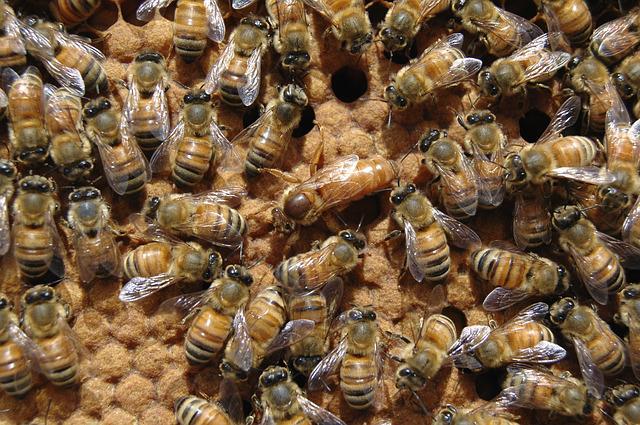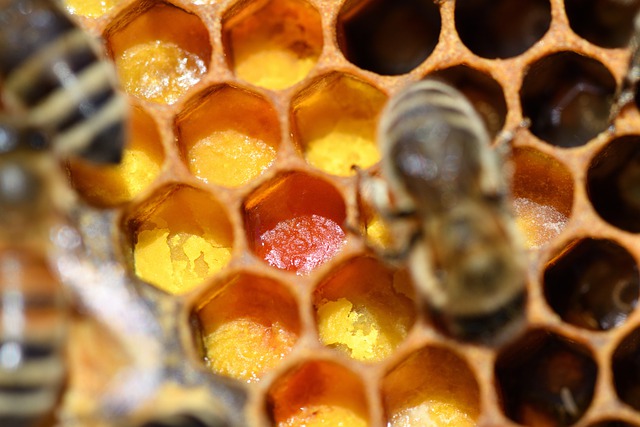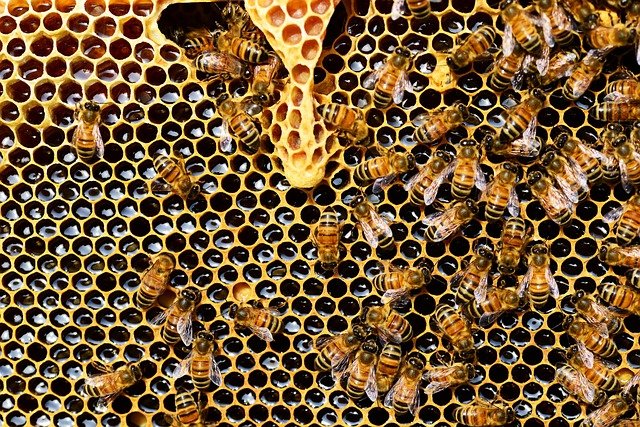In addition to the delicious honey, other products from the beehive are also very popular. As a natural remedy or natural food supplement: propolis, pollen and the like have long been used in traditional applications. Another less-known product from the bee world is the legendary royal jelly.

Not only is it used in high-priced cosmetics, but also in alternative medicine. Many people swear by this special substance from the bees. Countless healing effects are attributed to the miracle substance. It is said to be a fountain of youth for the skin and body and to bring new vitality to weakened and burned-out bodies. In fact, it’s even occasionally touted as a cure for cancer. However, it is often questionable which effects can be empirically proven and which stem more from wishful thinking in alternative medicine. Nevertheless, as a beekeeper, I am often asked if I also sell royal jelly. The demand for the supposed miracle substance from the hive is great.
The answer to this question is a resounding no, though. I do not harvest royal jelly from my own apiary, nor do I sell this bee product. And that I do with conviction. The whole thing however has nothing to do with the fact that harvesting and processing royal jelly is very time-consuming and expensive, rather there are ethical reasons that prevent me from doing so. In my opinion, the harvest of royal jelly is a massacre of the bees and does not fit in with a natural way of beekeeping. It is an act of animal cruelty and contempt for life.
Royal jelly is a nutritious jelly that worker bees produce themselves in special glands. The larvae of the young queens are fed this juice. It’s this substance that makes the difference whether a barren, simple worker bee or a majestic queen bee arises from a larva. Only the larvae that receive sufficient royal jelly develop into young queens, the only fully developed females in the hive. The larvae of the young queens are fed with the special substance up until they metamorphose into adult animals. In the sealed cells, they swim, so to speak, in a supply of royal jelly. Worker larvae, on the other hand, are only fed the precious commodity for a short time at the beginning of their development. They will then only receive a mixture of perga (fermented pollen) and honey for their further diet.

Royal jelly is therefore a natural substance that is able to turn simple workers into true queens. No wonder it’s so popular. Who doesn’t want a piece of that? The name is also important. The name Royal jelly or Gelee royal, as the French call it, sells well because it sounds sublime and high-quality. Even if hardly anyone knows what royal jelly actually is, the name leaves no doubt that it is something that is intended for queens and kings. And that surely must be good.

But how does the special feed intended for the growing offspring of bees get into the hands of human consumers? The answer to this is simple: abortion. In order to be able to harvest the royal jelly, the baby bees (larvae) must be removed from the cells. They are torn from their protective cell, which is very similar to a uterus, and die within a very short time because outside the protective cell and without the nutritious food supply, the larvae undercool and starve basically instantly. A loss that doesn’t matter to the beekeeper, because the larvae have already done their job. The desired royal jelly is now in the cells and can be harvested.
But in such a cell there is not very much of the desired jelly. Only a few milliliters of royal jelly can be harvested per aborted queen. In addition, royal jelly can only be harvested with expensive, specialized equipment and must be refrigerated or freeze-dried after harvesting. The harvest of this substance is therefore associated with high costs and a lot of work for the beekeeper. And how can the whole thing be profitable, if you can only harvest the tiniest amounts per abortion? The solution is quite simple: mass abortion.

The beekeepers artificially stimulate the bee colonies to raise an unnatural amount of young queens. After the old queen bee has been removed from the hive (usually killed, which causes immense stress on the bees), frames of artificial queen cells are placed in the hive. The beekeeper places a larva in each of these cells beforehand, which he can take from the cells in the brood nest of the colony. The worker bees from the colony now begin an emergency program (the loss of the queen means the death of the entire colony in the worst case) to care for and raise the new young queens in the artificial cells so that they can have a new queen in the colony as quickly as possible. Normally, the bees only do this with a handful of cells when there is a natural loss of their queen. With this artificial method, however, hundreds of queen larvae per colony can be raised at the same time.

Once the cells have reached the peak of their filling level, they are harvested. „Harvest“ in this case is a euphemism for mass murder or mass abortion. Hundreds of young queens are now being aborted in laborious manual work. Meanwhile, the cells freed from the unnecessary baby bees can be emptied with a special vacuum cleaner. However, even with this method of mass abortion, only about 500 g of the coveted substance can be harvested per colony per year. This explains the high price of the popular product.
The royal jelly must then be stored in a cool place so that it does not spoil. It is often freeze-dried to preserve it. The poor victims of this mass abortion, on the other hand, are ignored. They can simply be thrown on the ground next to the beehives to die. Fortunately, the larvae are so tiny that it is difficult to see them with the naked eye. And they don’t have the cute little round eyes common in mammals, either. So, it is easy to forget about the true nature of this questionable execution.
The result of this mass abortion can now be bottled and marketed at high prices. There are enough customers. Because when it comes to (supposed) healing powers, it doesn’t matter if a mass abortion has to be carried out for it. So the next time you want to buy a cosmetic product with royal jelly, think about how many abortions beautiful skin is worth to you.
Text: Fabian Kalis